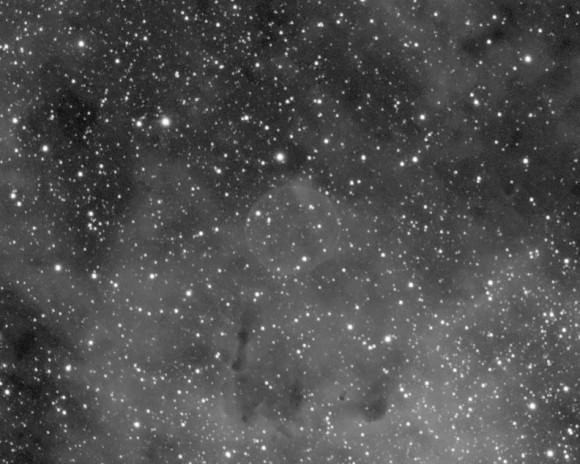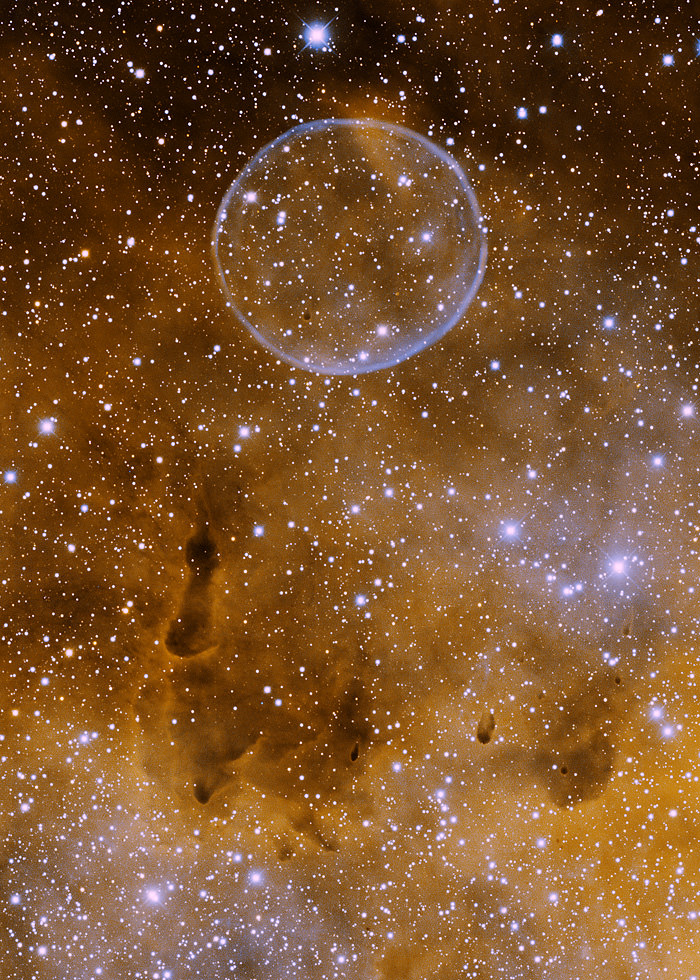[/caption]
What looks like a giant soap bubble or even perhaps just a water drop on a camera lens is actually a newly discovered planetary nebula. Dave Jurasevich of the Mount Wilson Observatory in California spotted the “Cygnus Bubble” while recording images of the region in July 2008. A few days later, amateur astronomers Mel Helm and Keith Quattrocchi also found it. Then, in 2009, the Kitt Peak Observatory pointed its 4-meter Mayall telescope at the object, and created the image above. Spectacular!
The bubble has been there awhile, and probably won’t “pop” anytime soon. The object was officially named PN G75.5+1.7 just last week. Astronomers have looked back at older images and found the object, just barely discernible in some images, such as this image below taken by Jurasevich.

A closer look at images from the second Palomar Sky Survey revealed it had the same size and brightness 16 years ago. Jurasevich thinks it was overlooked because it is very faint.
“It’s a beautiful example,” says Adam Frank of the University of Rochester, New York. “Spherical ones are very rare.” One explanation is that the image is looking down the throat of a typical cylindrical nebula. However, it is still remarkably symmetrical, Frank says.
For more about the history of observing this object, check out this post on Jurasevich’s Star Imager site.
Source: New Scientist

